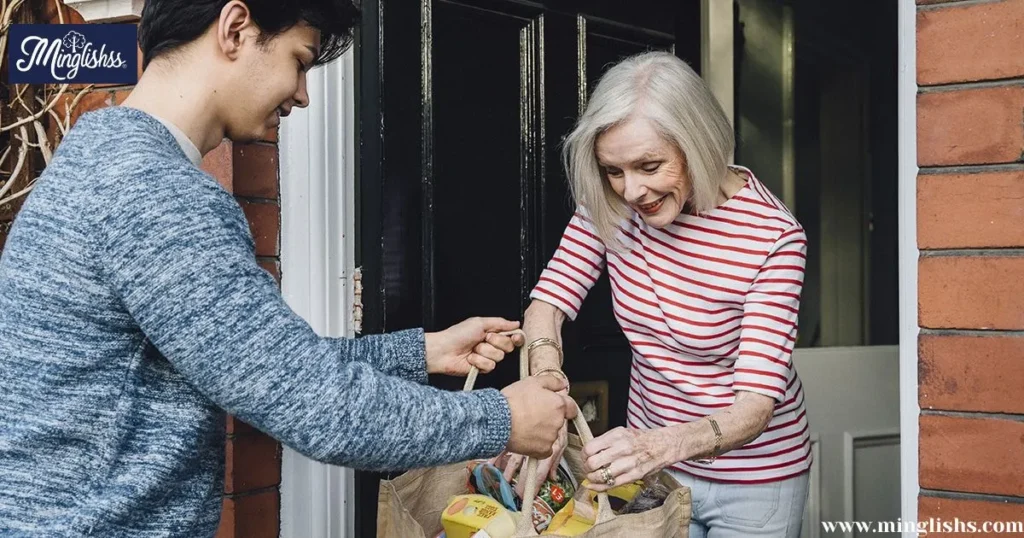“Helping others is a gift that keeps on giving.”
When it comes to providing assistance, the phrase “my pleasure to help” often conveys a sense of warmth and willingness. However, in various situations, it can be beneficial to diversify our language and express our willingness to assist in different ways. Using varied expressions not only enriches our conversations but also enhances our communication skills, making interactions more engaging and personable.
Encouraging you to expand your vocabulary is vital. By exploring other phrases and expressions, you can adapt your communication style to fit different contexts. Whether in a professional setting or casual interactions, the ability to express your eagerness to help can strengthen relationships and leave a lasting impression.
In this blog, we will delve into 35 alternative phrases to say “my pleasure to help.” Each phrase will include a scenario, an explanation, and additional tips to make your communication even more effective. With these options at your disposal, you’ll be equipped to express your willingness to help in various situations with ease and confidence.
Alternative Phrases to “My Pleasure to Help”
1. “I’m happy to assist!”
Scenario: When a customer asks for help at a store.
Explanation: Saying “I’m happy to assist!” conveys a friendly and approachable demeanor. This phrase can make the customer feel more at ease and welcomed. For instance, if Sarah, a sales associate, helps a customer find the right product, this phrase expresses her enthusiasm for providing great service.
Additional Tips: Always smile when delivering this line to make it feel genuine. A positive attitude goes a long way in customer service!
2. “Glad to lend a hand!”
Scenario: During a group project in a meeting.
Explanation: Using “glad to lend a hand!” shows your teammates that you are willing to contribute. When Mark offers help to his colleagues in a brainstorming session, he uses this phrase to emphasize his readiness to collaborate.
Additional Tips: Use this phrase when someone seems overwhelmed to encourage teamwork and support.
3. “It’s my pleasure!”

Scenario: After completing a task for a coworker.
Explanation: This classic phrase communicates genuine joy in helping others. When Jessica finishes a report for her colleague, she says, “It’s my pleasure!” to emphasize her commitment to teamwork.
Additional Tips: This phrase is versatile and can be used in both professional and personal settings.
4. “I’m here to help!”
Scenario: When a friend asks for assistance with a personal issue.
Explanation: By stating “I’m here to help!” you reassure the person that you are genuinely available to support them. When Alex listens to his friend talk about a tough day, he emphasizes his willingness to assist in any way he can.
Additional Tips: Tone matters; use a soft voice to convey empathy.
5. “Happy to help out!”
Scenario: When volunteering for a local charity.
Explanation: Saying “happy to help out!” emphasizes your eagerness to contribute. When Mia joins her friends to organize a charity event, she uses this phrase to express her enthusiasm for the cause.
Additional Tips: This phrase works well in informal settings, especially when working with friends.
6. “Always at your service!”
Scenario: In a restaurant setting.
Explanation: This phrase is commonly used in hospitality. When a waiter assists customers, saying “always at your service!” conveys a strong commitment to excellent service.
Additional Tips: This phrase is ideal for formal dining environments.
7. “I’m pleased to assist!”
Scenario: In a corporate setting.
Explanation: “I’m pleased to assist!” has a formal tone, making it suitable for business interactions. When Brian helps a client navigate a complicated process, he uses this phrase to maintain professionalism.
Additional Tips: This phrase can help in setting a respectful tone during discussions.
8. “I’d love to help!”
Scenario: When a colleague needs support on a project.
Explanation: This phrase conveys enthusiasm. When Linda offers her expertise on a project, she says, “I’d love to help!” to show her genuine interest in collaborating.
Additional Tips: Enthusiasm is contagious, so say it with a smile!
9. “Count on me!”
Scenario: When a friend needs assistance moving houses.
Explanation: This phrase shows reliability. When Kevin tells his friend he can help with the move, saying “count on me!” reinforces his commitment to being there.
Additional Tips: Use this phrase when someone might doubt your willingness to help.
10. “I’m all yours!”

Scenario: During a mentoring session.
Explanation: This expression conveys availability and attentiveness. When Sophie meets her mentee, she says, “I’m all yours!” to assure them they have her full attention.
Additional Tips: Maintain eye contact to enhance connection when using this phrase.
11. “Delighted to help!”
Scenario: When receiving a question from a client.
Explanation: This phrase expresses eagerness and positivity. When Tom answers a client’s inquiry, he uses “delighted to help!” to create a friendly atmosphere.
Additional Tips: This phrase is particularly effective in customer service interactions.
12. “Consider it done!”
Scenario: When assigned a new task at work.
Explanation: This phrase expresses confidence and commitment. When Emma receives a new project from her manager, she says, “consider it done!” to assure them of her dedication.
Additional Tips: Use this phrase to demonstrate decisiveness.
13. “I’m here for you!”
Scenario: Supporting a friend going through a tough time.
Explanation: This phrase emphasizes emotional support. When Jason comforts his friend dealing with a breakup, he reassures them by saying, “I’m here for you!”
Additional Tips: Be sincere in your delivery to strengthen the bond.
Other Ways to Say “As Previously Mentioned”
14. “It’s no trouble at all!”
Scenario: When helping someone with a small favor.
Explanation: This phrase downplays the effort involved. When Rachel helps her neighbor with groceries, she says, “it’s no trouble at all!” to make them feel comfortable asking for help.
Additional Tips: Use this phrase to encourage others to ask for assistance more often.
15. “My assistance is at your service!”
Scenario: In a formal meeting.
Explanation: This phrase conveys professionalism. When Robert offers his insights during a board meeting, he states, “my assistance is at your service!” to show respect for the process.
Additional Tips: This phrase works well in formal settings or with clients.
16. “I’d be glad to help!”
Scenario: When a colleague asks for help with a presentation.
Explanation: This phrase conveys enthusiasm and willingness. When Julie offers her help with a colleague’s presentation, she says, “I’d be glad to help!” to show support.
Additional Tips: Use this phrase when someone expresses gratitude for your help.
17. “No problem!”
Scenario: When someone thanks you for a small favor.
Explanation: This casual phrase communicates ease and approachability. When David holds the door open for a stranger, he responds with “no problem!” when they thank him.
Additional Tips: Use this phrase in informal situations to maintain a friendly tone.
18. “Happy to oblige!”
Scenario: When fulfilling a request from a supervisor.
Explanation: This phrase expresses willingness and compliance. When Sara receives a task from her boss, she says, “happy to oblige!” to show her readiness to meet expectations.
Additional Tips: This phrase is especially effective in workplace scenarios.
19. “I’m available to help!”
Scenario: When offering assistance to a friend.
Explanation: This straightforward phrase indicates your readiness to assist. When Alex notices a friend struggling with an assignment, he says, “I’m available to help!” to show support.
Additional Tips: This phrase is great for when someone might be hesitant to ask for help.
20. “It’s what I’m here for!”
Scenario: During a customer service call.
Explanation: This phrase reinforces your role in providing help. When Lisa helps a customer resolve an issue, she says, “it’s what I’m here for!” to emphasize her commitment.
Additional Tips: This phrase can enhance customer satisfaction.
21. “I’m happy to pitch in!”
Scenario: In a team project at work.
Explanation: This phrase shows teamwork and cooperation. When John offers to help a coworker with their tasks, he says, “I’m happy to pitch in!” to foster collaboration.
Additional Tips: Use this phrase in group settings to encourage teamwork.
22. “Here to support you!”
Scenario: Supporting a friend in a difficult situation.
Explanation: This phrase shows emotional investment. When Emily reassures her friend going through a tough time, she says, “here to support you!” to convey her commitment to being there.
Additional Tips: This phrase is ideal when emotional support is needed.
23. “Always ready to help!”

Scenario: In a customer service role.
Explanation: This phrase expresses reliability. When Matt assists a customer with their order, he says, “always ready to help!” to create a sense of trust.
Additional Tips: Use this phrase to emphasize your commitment to service.
24. “I’m all about helping out!”
Scenario: During a community event.
Explanation: This casual phrase communicates enthusiasm. When Sarah volunteers at a community center, she says, “I’m all about helping out!” to express her passion for service.
Additional Tips: This phrase is great for informal situations.
25. “I’m glad to be of service!”
Scenario: In a professional setting.
Explanation: This phrase communicates professionalism. When a client thanks Michael for his assistance, he replies, “I’m glad to be of service!” to maintain a formal tone.
Additional Tips: Use this phrase when interacting with clients or in business situations.
26. “Happy to share my expertise!”
Scenario: During a workshop or training session.
Explanation: This phrase emphasizes your willingness to help others learn. When Anna leads a workshop, she says, “happy to share my expertise!” to encourage questions.
Additional Tips: This phrase fosters an atmosphere of learning and collaboration.
27. “Pleased to help you out!”
Scenario: When helping a colleague with a task.
Explanation: This phrase conveys satisfaction in assisting others. When Tom offers to help a colleague, he says, “pleased to help you out!” to emphasize his willingness to support.
Additional Tips: This phrase is effective in both professional and personal contexts.
28. “I’ve got your back!”
Scenario: When a friend faces a challenge.
Explanation: This informal phrase expresses loyalty and support. When Lily encourages her friend to tackle a difficult situation, she says, “I’ve got your back!” to reinforce her commitment.
Additional Tips: Use this phrase in casual conversations to strengthen friendships.
29. “More than happy to help!”
Scenario: When someone asks for assistance.
Explanation: This phrase emphasizes eagerness. When David helps a colleague with a project, he says, “more than happy to help!” to showcase his enthusiasm.
Additional Tips: This phrase works well in both professional and informal contexts.
30. “Just ask, and I’m here!”
Scenario: Offering help in a group setting.
Explanation: This phrase invites others to seek assistance. When Rachel leads a team meeting, she says, “just ask, and I’m here!” to encourage open communication.
Additional Tips: Use this phrase to create a supportive environment.
31. “I’m glad to step in!”

Scenario: When taking over a task from a coworker.
Explanation: This phrase conveys readiness. When Alex offers to assist a coworker overwhelmed with tasks, he says, “I’m glad to step in!” to show his willingness to help.
Additional Tips: This phrase fosters a sense of teamwork.
32. “Just let me know how I can assist!”
Scenario: When meeting someone new.
Explanation: This phrase invites collaboration. When Ben meets a new coworker, he says, “just let me know how I can assist!” to express his openness to helping.
Additional Tips: Use this phrase to foster connections with new people.
33. “I’m always here to help you!”
Scenario: When supporting a family member.
Explanation: This phrase conveys unconditional support. When Jessica reassures her sibling going through a tough time, she says, “I’m always here to help you!” to show her commitment.
Additional Tips: This phrase is effective in personal relationships.
34. “Your satisfaction is my priority!”
Scenario: In a customer service role.
Explanation: This phrase emphasizes commitment to customer care. When Maria assists a client, she says, “your satisfaction is my priority!” to reinforce her dedication to service.
Additional Tips: Use this phrase to build trust with clients.
35. “It’s an honor to help!”
Scenario: When assisting someone in need.
Explanation: This phrase conveys respect and gratitude. When Jason helps a neighbor during a crisis, he says, “it’s an honor to help!” to express his commitment to community.
Additional Tips: Use this phrase to show deep respect for the person you are assisting.
Pros and Cons of Varying Your Language
Pros
- Enhanced Communication: Using different phrases enriches conversations, making them more engaging.
- Stronger Relationships: Varied language can strengthen personal and professional relationships by showing empathy and understanding.
- Increased Flexibility: The ability to adapt your language makes you a more effective communicator across different contexts.
Cons
- Confusion: In some situations, varied phrases might confuse the listener, especially if they are not familiar with the alternatives.
- Cultural Differences: Certain phrases may not translate well across cultures, leading to misunderstandings.
- Overcomplication: Using overly complex or elaborate phrases can detract from the simplicity of the message.
Conclusion:
Exploring different ways to express “my pleasure to help” can significantly enhance your communication skills. By using varied phrases, you not only express your willingness to assist but also create a more engaging and meaningful dialogue with others.
Remember, the key is to choose phrases that fit the context and your personality, allowing you to connect with others on a deeper level. The next time someone needs assistance, consider one of these alternatives to convey your eagerness to help your words can make a big difference!
Answer to key questions
1. What are some alternatives to saying “my pleasure to help”?
There are many alternatives, including phrases like “happy to assist,” “glad to help,” “always here for you,” and “more than happy to help.” Each phrase can convey your willingness to assist in different contexts.
2. Why should I use different phrases to express willingness to help?
Using varied phrases enhances communication by making conversations more engaging and tailored to the situation. It can also strengthen relationships and show empathy and understanding toward others.
3. Are there specific phrases for professional versus casual situations?
Yes, some phrases are more suitable for professional settings, such as “pleased to help you out” or “your satisfaction is my priority.” In contrast, casual phrases like “I’ve got your back” or “I’m here for you” work well in informal contexts.
4. How can varying my language improve my relationships?
Varying your language can enhance personal and professional relationships by demonstrating that you are attentive and responsive to others’ needs. It can also foster a sense of connection and mutual respect.
5. What should I consider when choosing a phrase to express my willingness to help?
Consider the context, the person you are communicating with, and the tone you want to convey. Choose a phrase that feels authentic to you and is appropriate for the situation to ensure effective communication.

I’m Jane Austen, a language expert at Minglishs, dedicated to helping learners master English through engaging and accessible content. My passion for literature and teaching drives me to make language learning both enjoyable and effective.










